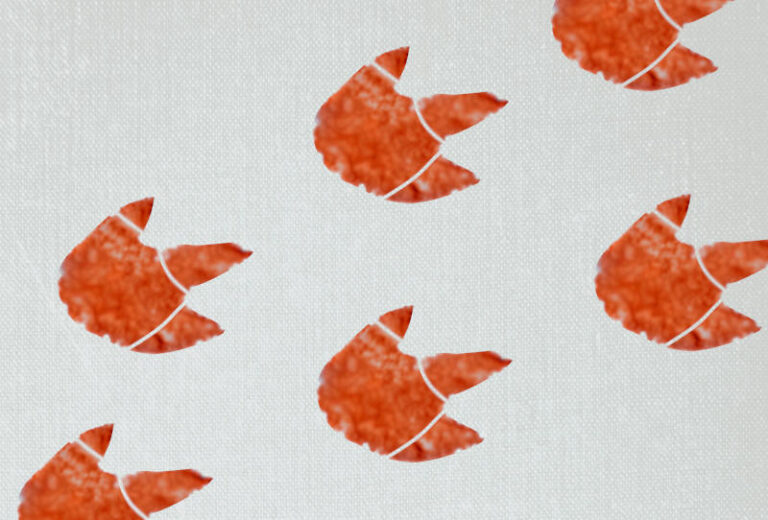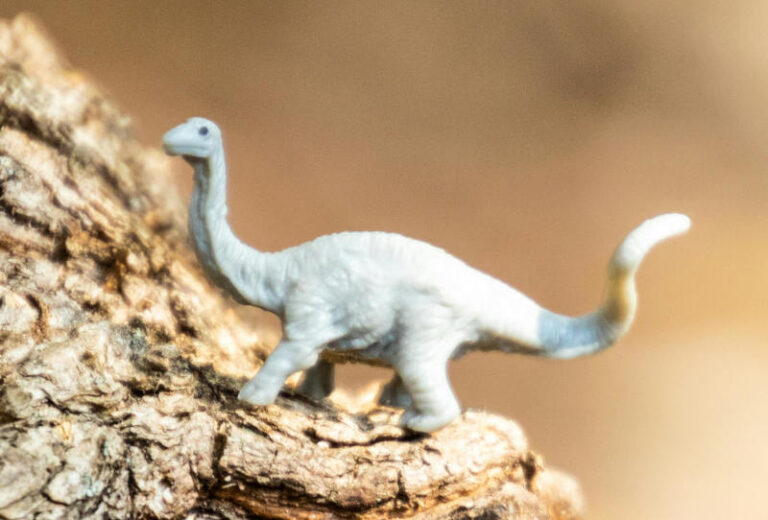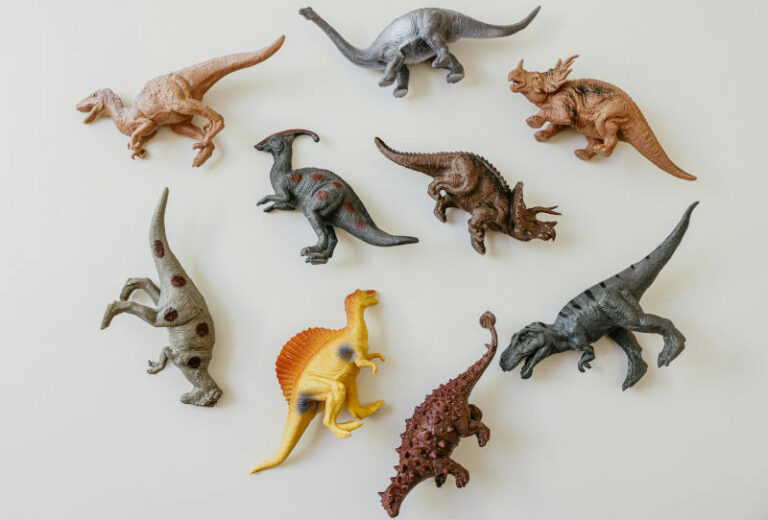Dinosaurs are awesome – though that’s mainly because they’re not around anymore. They’re also a fascinating theme for young children, making them an ideal topic for EYFS learning activities.
Dinosaur activities can promote curiosity, creativity, and early scientific thinking, as well as find an early answer to the lifelong question: ‘what’s your favourite dinosaur’.
Below are some engaging and educational dinosaur activities for EYFS that support early development while sparking excitement for learning – and dinosaurs.
Blossom’s Recommended Dinosaur Activities for Early Years:
1. Dinosaur Dig Sensory Play
Create a tuff tray filled with sand and hidden plastic dinosaur figures or ‘fossils’ (see activity 4 for ideas). Give the children brushes, trowels, and magnifying glasses to dig and ‘excavate’ their own dinosaur findings, and if they’re recognisable dinosaurs let them describe and try naming them.
Encourage children to describe what they can see on the dinosaurs – leg sizes, extra features like spikes and plates etc. If you’ve got fossils that look like bones, you can explain and explore why dinosaurs don’t look like dinosaurs when we find them in the ground.
This activity encourages sensory exploration, fine motor skills, and a very early understanding of palaeontology. Though we wouldn’t expect them all to remember the word!
EYFS Areas of Development:
- Understanding the World (The Natural World, Past and Present)
- Physical Development (Fine Motor Skills)
- Communication and Language (Speaking)
2. Dinosaur Footprint Painting
A version of potato printing, but with scary dinosaur feet! This’ll require some carving time, but with a handful of potatoes and some cutting expertise, you’ll have a dinosaur footprint menagerie ready for ‘stomping’ in no time at all. They don’t have to be completely historically accurate, just aim for four or three toes – you could even just use a fork.

Dip the prints in paint and let the children stomp the potatoes (with their hands) across sheets of paper to mimic dinosaur movements. This helps develop gross motor skills and creativity, along with numbers if you spend time counting the toes and footprints.
EYFS Areas of Development:
- Physical Development (Gross Motor Skills)
- Expressive Arts and Design (Being Imaginative and Expressive)
- Mathematics (Number)
3. Dinosaur-Themed Story Time
Read dinosaur-themed books such as Harry and the Bucketful of Dinosaurs or Dinosaur Roar! After reading, engage the children in discussions about their favourite dinosaurs and ask them to describe what they think dinosaurs might have been like.
This can evolve into acting like the dinosaurs as they imagine them from the book. Slowly and thoughtfully if a titanic herbivore, or perhaps quickly like a T-Rex going on the hunt. What might a dinosaur roar sound like, or a parasaurolophus (the one with a duck bill) hoot?

This activity promotes literacy, language development, and comprehension. Add in the activity evolution and you’ve got expressive arts and design to boot with imagination and creativity!
EYFS Areas of Development:
- Literacy (Comprehension, Word Reading)
- Communication and Language (Listening, Attention and Understanding)
- Understanding the World (The Natural World)
4. Dinosaur Fossil Craft
Create “fossils” using salt dough or clay. Let the children press plastic dinosaur toys or leaves into the dough to create impressions, mimicking the look of real fossils (that’s right, even plants can get fossilised!). After the dough dries, children can paint their fossils if you’d like to extend the fun.
This craft helps with fine motor skills and introduces children to early scientific concepts such as fossils and history. It also helps with thinking about shapes, particularly how 3D shapes can come from a mould.
EYFS Areas of Development:
- Expressive Arts and Design (Creating with Materials)
- Physical Development (Fine Motor Skills)
- Understanding the World (The Natural World)
5. Dinosaur Sorting and Counting
If you have enough of them, you can use plastic dinosaur toys to help children practise counting and sorting. When you have enough of anything it’s an opportunity for counting!

Ask the children to group the dinosaurs by type, size, or colour, and count how many they have in each group. This activity introduces basic maths concepts such as number recognition, sorting, and grouping.
EYFS Areas of Development:
- Mathematics (Number)
- Physical Development (Fine Motor Skills)
- Communication and Language (Speaking)
6. Dinosaur Roar Dance
Introduce a dinosaur-themed movement activity by encouraging children to act like different dinosaurs. For example, they can “stomp” like a Tyrannosaurus Rex or “soar” like a Pterodactyl.
This activity promotes gross motor skills and encourages children to use their imagination and explore rhythm and movement. It might get a little noisy, but that’s all part of the fun and makes it a prime opportunity for a learning journey observation or golden moment.
EYFS Areas of Development:
- Physical Development (Gross Motor Skills)
- Expressive Arts and Design (Being Imaginative and Expressive)
- Personal, Social, and Emotional Development (Managing Self)
7. Dinosaur Songs and Rhymes
Sing dinosaur-themed songs and rhymes like “We Are the Dinosaurs” or “Five Dinosaurs Stomping.” Add simple hand movements or dinosaur “roars” to make the experience more interactive. This helps with language development, rhythm awareness, and physical coordination.
EYFS Areas of Development:
- Personal, Social, and Emotional Development (Managing Self)
- Physical Development (Gross Motor Skills)
- Expressive Arts and Design (Being Imaginative and Expressive)
8. Frozen Dinosaur Eggs
Similar to the palaeontology activity at the start of this post, dinosaur eggs are a great way to get kids hands-on with dinosaur discovery. Take your little dinosaur toys and put them into egg moulds, then freeze them in a mixture of water and bicarbonate of soda (important for the next bit).
To uncover the unhatched dinosaurs, have the children add a little vinegar using a pipette, syringe or spoons and watch the dinos fizz their way out. For added excitement, adding a dash of food colouring can really up the fizzy fun! If fizzing’s too slow for you/the kids, break out some little hammers or other smashy tools and get cracking.
This activity teaches a little science, the patience of managing self, fine motor skills, and of course, the natural world. Though real eggs don’t fizz when they hatch!
EYFS Areas of Development:
- Personal, Social, and Emotional Development (Managing Self)
- Physical Development (Fine Motor Skills)
- Understanding the World (The Natural World)
Incorporating dinosaur activities for EYFS into your curriculum is a wonderful way to engage young children in learning while developing their cognitive, language, and physical skills.
From sensory play and creative crafts to interactive storytelling and movement activities, dinosaurs offer a versatile and exciting theme for early years development. Plus: it’s dinosaurs!
For more brilliant EYFS activities, check out our Ultimate guide to EYFS activities blog post and easily cover the seven areas of learning and development!